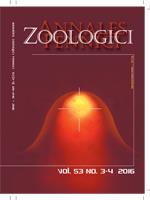Grazing by large mammals can affect small-mammal populations by modifying the ground-layer vegetation, which provides them with food and shelter. The aim of this study was to investigate the impact of semi-domesticated reindeer grazing on smallmammal abundance in boreal forests/subarctic tundra ecosystems in a large-scale exclosure experiment in northernmost Finnish Lapland. In our experiment spanning four years, reindeer grazing affected the abundance of arvicoline voles, which were less abundant in grazed areas. This was probably due to a reduction in the abundance and height of bilberry, an important forage plant for both voles and reindeer. Changes in ground-layer vegetation affected the general condition of bank voles, which had significantly lower body mass in grazed areas. The abundance of insectivorous shrews was also reduced by grazing, probably due to a reduction in ground-dwelling invertebrates as an indirect effect of changes in the composition of ground-layer vegetation. A grazing-induced reduction in small mammal abundance can have far reaching ecological consequences for small-mammal population dynamics as well as mammalian and avian predators depending on small mammals as food.
How to translate text using browser tools
15 April 2016
Large Herbivore Grazing Limits Small-Mammal Densities in Finnish Lapland
Michael den Herder,
Samuli Helle,
Pekka Niemelä,
Heikki Henttonen,
Timo Helle
ACCESS THE FULL ARTICLE

Annales Zoologici Fennici
Vol. 53 • No. 3–4
August 2016
Vol. 53 • No. 3–4
August 2016




